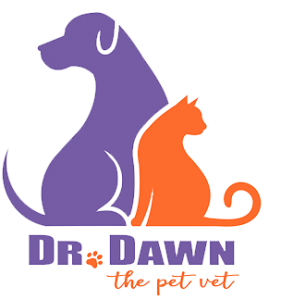Physicians have known for years that good nutrition and adequate exercise are very important in maintaining our health. We are all aware that early detection is also extremely important in removing cancerous lesions before they become malignant or spread. Evidence is mounting that this advice, along with various other recommendations, may in fact help prevent certain types of cancer. Veterinarians are finding that the same advice holds true for their dog and cat patients. These are some interesting studies that I thought worth sharing, describing these findings.
Researchers out of MD Anderson Cancer Center in Texas have concluded that the use of non-steroidal anti-inflammatory drugs, or NSAIDs, is linked to a significant decrease in the incidence of gastric cancer. Previous research published in a leading medical journal, The Lancet, demonstrated that taking low doses of aspirin – once daily for at least five years-decreases the chance of a person getting lung, gastrointestinal, or colon cancer.
Although the research was evaluated in people, dogs and cats respond the same way to NSAIDs, inhibiting enzymes that cause inflammation. Inflammation, especially acute inflammation, is essential for wound healing and other important immune functions. It has been shown that when inflammation becomes chronic, cancer risk increases. Cancer seems to be able to co-opt the cells involved in this process and utilize them to allow malignant cells to proliferate.
Therefore, NSAIDs and other compounds that decrease or stop chronic inflammation may be able to help prevent cancer in our pets. I am not suggesting that we all go out and medicate our pets with these drugs, as they present risks to the gastrointestinal tract, kidneys and liver with chronic administration. The above photos are of NSAIDS approved for dogs that are safer than over the counter products. Determining whether the risks outweigh the benefits is an issue best discussed with your vet, for your particular pet. Yet, if your pet is already using them for orthopedic issues, you might feel some relief due to this added benefit.
Additionally, compounds within the cruciferous family (eg. kale and broccoli), have been found to also decrease inflammation. Yellow, orange, and red vegetables contain these compounds which act by blocking a compound called Prostaglandin E2. Evidence suggests that feeding dogs these types of vegetables at least three times per week can decrease the risk of bladder cancer in certain breeds. Again, consult your veterinarian about this. Personally, I am planning on having these healthy snacks available for my dog (and me).
Cat’s Tail May be a Good New Vaccination Spot
Certain vaccines have a very small chance of causing a malignant sarcoma at the injection site. We have known this for years. The chance is slim – one to 10 cats out of every 10,000 vaccinated. Still, protocols are in place to try to prevent this, and certain locations on the body are designated to give specific vaccines. Limbs have been used, because if cancer does develop, wide surgical excisions, involving amputation, are indicated. As a result, many cat owners are reluctant to pursue this treatment, as it is an invasive, painful, and expensive procedure.
A recent study has determined that tail vaccinations are equally effective in providing the necessary immunity. It has been found to be well tolerated by cats. And, in the rare event that a tumor develops, it is a much easier surgical procedure to amputate a tail. It is also less traumatic and is more easily tolerated by the patient. It is hoped that this new location will be included in vaccination protocols in the near future.
Dr. Dawn
Please share and subscribe here













